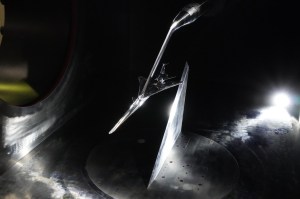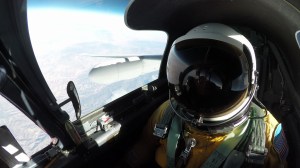NASA recently signed a Space Act Agreement with San Francisco-based Zipline to pursue a future vision of U.S. aviation that includes delivery drones and air taxis.
To fully realize this vision, NASA researchers are developing tools and techniques to enable m:N operations – where a small number of humans (m) effectively manage many autonomous vehicles (N). This research includes close coordination with the aviation community to understand industry and public needs for these types of operations.
“These collaborations are quite important,” said Kelley Hashemi, the technical lead for autonomous systems at NASA’s Ames Research Center in California. “It’s critical for NASA to gather the community’s input in order to achieve meaningful progress towards this future vision of U.S. aviation.”
Zipline, an instant logistics company that makes deliveries via drone, currently uses m:N operations to transport medical supplies and consumer goods in Northwest Arkansas, Japan, Ghana, and Rwanda. Zipline wants to continue to give back to the aviation community by sharing its lessons learned.
Through this partnership, NASA will use Zipline’s experience to find solutions for broadly implementing m:N operations in the U.S. airspace. In return, Zipline can leverage NASA’s tools and research to determine what is needed to expand its fleet operations in the United States.
“Public-private cooperation is essential to expanding drone delivery and unlocking its benefits for more people,” said Conor French, general counsel of Zipline. “This partnership is an important step in that direction. We’re excited to work with NASA to accelerate growth in drone delivery, both in the U.S. and abroad.”
Zipline also engages in NASA’s m:N working group – a collaboration among government, industry, and academia to identify and reduce m:N operation barriers.
The working group considers a variety of use cases and addresses barriers such as technical, regulatory, safety assurance, and community acceptance. This collaboration will advance the scalability of future U.S. airspace by laying the groundwork for a new operational paradigm.
This effort is just one example of how NASA’s Transformational Tools and Technologies project delivers innovative solutions through foundational research and cross-cutting tools. Check out the Revolutionary Aviation Mobility website to receive updates on this partnership and learn how to engage with the m:N working group.

































